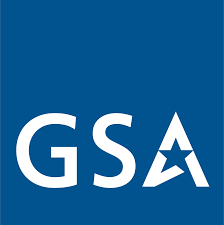

The General Services Administration is seeing slow, steady growth for its Human Capital and Training Solutions governmentwide contract.
The General Services Administration is priming the pump for its Human Capital and Training Solutions (HCATS) governmentwide contract. GSA held an industry symposium earlier this summer in expectation of a big end-of-the-fiscal-year spending spree by customer agencies.
Tiffany Hixson, the assistant commissioner for GSA’s Federal Acquisition Service’s Office of Professional Services and Human Capital Categories, said despite the fact these types of large multiple award contracts take time to get going, GSA expects HCATS to begin to take off this fall.
“We expect a good two years before HCATS will be used at full capacity. That is not new to us. Some think it will be presto, change-o, and everyone will be using the new contact immediately and that’s just not what happens in real life, in particular given how long acquisition timelines are,” Hixson said in an interview with Federal News Radio. “HCATS was designated as a ‘best-in-class’ contract this spring. Agencies have been notified about its availability for use. The human capital category executive is spending time with chief human capital officers, chief learning officers to familiarize them with the contract vehicle, resources and industrial base available for them. On the GSA side, we are spending quite a bit of time on the road training contracting officers and issuing delegation of procurement authority to use the contracts.”
This fall will be one year since HCATS officially launched. GSA awarded HCATS to 109 vendors in May 2016. The 10 1/2 year contract has a ceiling of $11.5 billion and replaced the Training and Management Assistance (TMA) contract run by the Office of Personnel Management for the last two decades. After a series of bid protests, GSA finally issued the notice to proceed for HCATS in September.
Hixson said despite impatience by vendors, HCATS is starting to see some action.
The Commerce Department awarded the first task order under the contract for its FirstNet program.
Hixson said GSA’s assisted acquisition services are working on 10 task orders under HCATS, with the Defense Department being one of the largest customers.
She said the pipeline of procurements her office can see is worth about $120 million-to-$150 million over the lifecycle.
“The value HCATS is bringing to the human capital services market is very much like OASIS [GSA’s governmentwide contract for professional services],” Hixson said. “[HCATS is] a contract vehicle where we can do cost-reimbursement type contracts. It is tailored and the industrial base was selected because they are able to handle complex human capital services requirements, which has really been a vacuum. We haven’t had this kind of contract before so it’s really filling a need that was unmet previously.”
In June, GSA brought HCATS contract holders together for the first time during a symposium to do a program management review and talk about administrative and contracting issues.
Hixson said for the most part industry wanted to know when task orders would be coming from agency customers. She said GSA told industry it will take time to get HCATS fully going, but it should be a slow and steady build-up.
While HCATS is a major priority for GSA’s Office of Professional Services and Human Capital Categories, Hixson said several other initiatives are on the horizon as well.
GSA will move its identity protection services blanket purchase agreement, awarded after the breach suffered by the Office of Personnel Management in 2015, into a Special Item Number (SIN) under the professional services schedule.
Hixson said the SIN will give agencies more vendor options to choose from and the schedule contracts will have a longer life than any BPA task order.
“We felt moving to a SIN would be a better approach in terms of providing support to the government for the long term,” she said. “The major advantages of it being a SIN is it’s a long-term contract environment, up to 20 years. We also have the flexibility to change requirements over time as the threat changes. My guess is in 10 years. the requirements for identity protection services will look very different than they do today. By putting them on a SIN, we are able to modify those requirements as the threat changes, which is a huge advantage and we don’t have to go out and do another source selection. We can work with the industrial base to get those requirements put on schedule.”
Over the longer term, Hixson said GSA plans to restructure the professional services schedule. After receiving industry feedback earlier this year, she said the goal is to streamline the program’s solicitation over the next few months.
“This will likely serve as a model for other schedules in GSA in terms of how we can streamline the offer requirements and make it easier for industry to participate in the schedule space,” she said. “This is related back to the Making it Easier campaign. We are moving to a standard past performance feedback approach. We’ve worked really hard to get submittals down to four pieces of paper and you know what the evaluation criteria are. That makes it a lot easier than it is today.”
Hixson said overall the use of the schedules program and multiple award contracts are up governmentwide.
As of June, 25 percent of all professional services spend is going through GSA’s contracts.
Copyright © 2024 Federal News Network. All rights reserved. This website is not intended for users located within the European Economic Area.
Jason Miller is executive editor of Federal News Network and directs news coverage on the people, policy and programs of the federal government.
Follow @jmillerWFED


